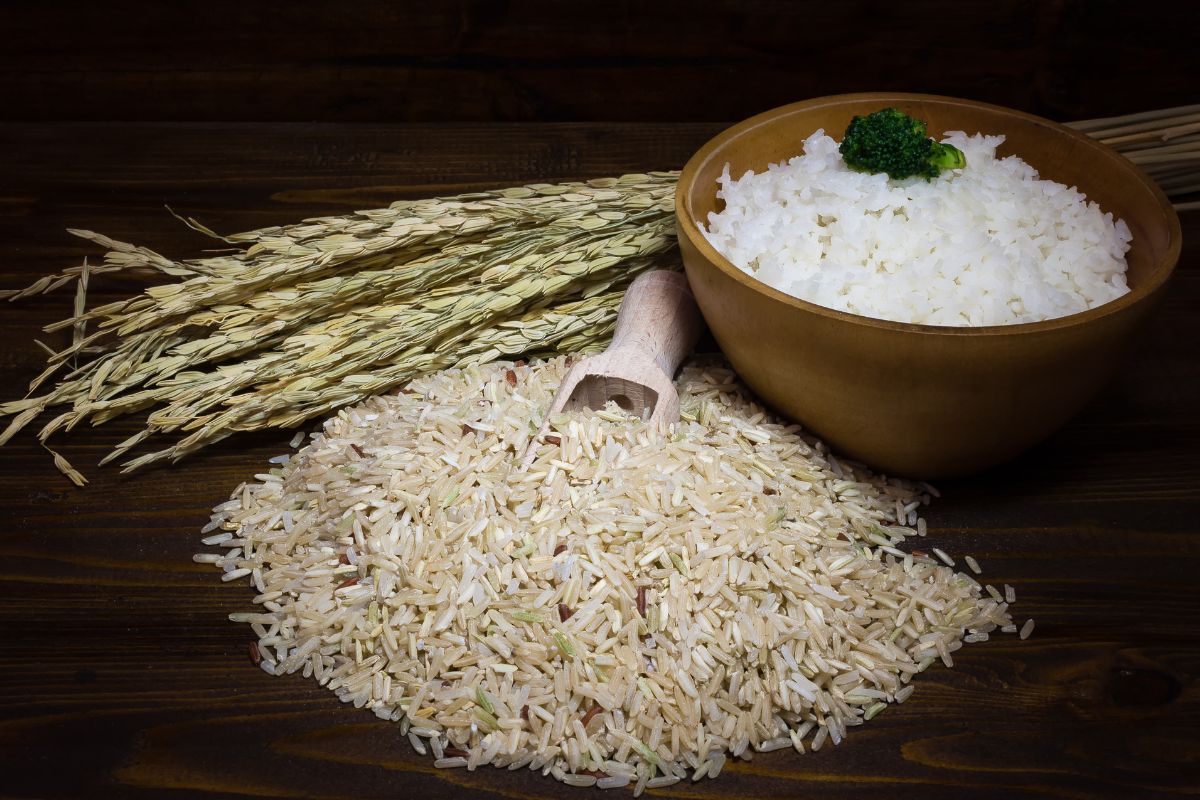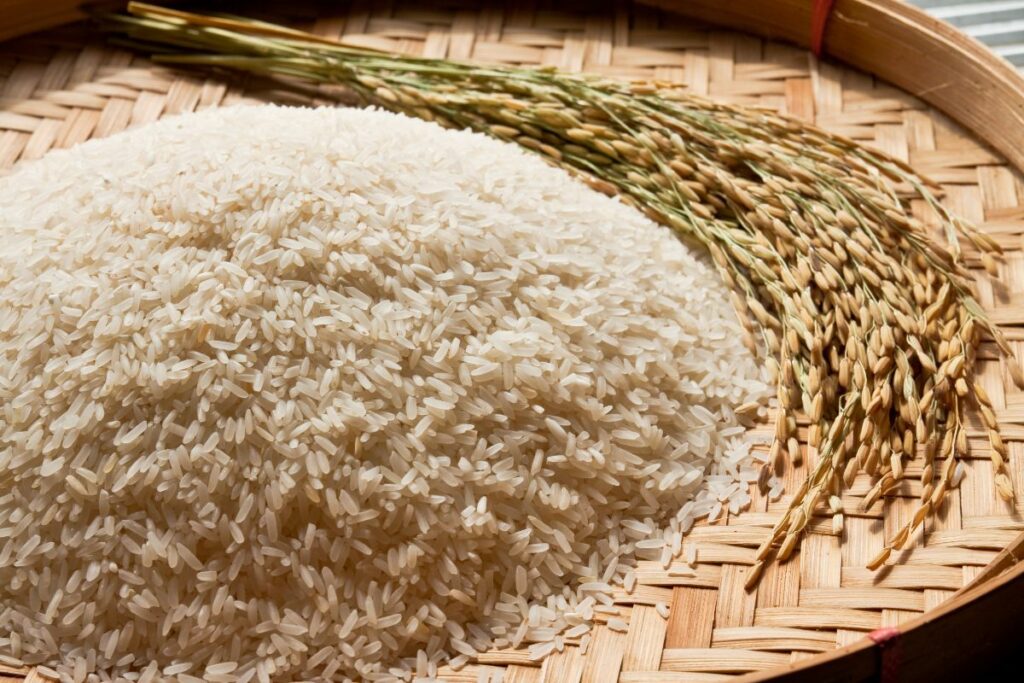Rice and wheat are among the most widely consumed cereal grains on the planet. Since antiquity, the two grains have been the key ingredients in many societies’ quintessential meals.
This article looks into the differences between rice and wheat to determine which of the two is better for our health.
From their calorific profile and content of water to their minerals and macronutrients, there are many things that make clear which of these two grains is the best for our health and diet, so keep reading below for a full guide and to get an answer to your question!
The Basic Difference Between Whole Grains And Processed Grains
Before going into the differences between rice and wheat, it is important to determine the difference between whole and processed grains and state that, in general, it is best to select whole grains over refined starches like white rice and plain white flour.
Even though they all have roughly the same quantity of carbs, they are quite different when it comes to their nutrient composition.
To be more precise, rice and wheat contain half of the nutrients of those in whole-grain rice and wheat, with many packaged and pre-cooked versions containing even less than that.
And while many countries like the UK offer products like processed grains enriched with vitamins and minerals, they are still low in fiber and not as nutrient-rich as the whole grain ones.
Which Is Better: Rice Or Wheat?
The quick answer to that is that wheat is a better option for your health, as it is richer in nutrients.
However, while the differences listed below between wheat and rice take white rice into account, it is worth mentioning that other types of rice like brown and wild rice are less processed and their nutrient profile is greater than that of white rice.
Even so, unprocessed wheat and products like wheat barley are significantly better than all rice varieties.
But let’s see how these two grains compare next to each other.
Water Content, Minerals, And Amino Acids
Wheat contains more than twice as much protein as white rice, while both of them have some quantities of all the essential amino acids.
However, wheat has a greater concentration of every one of those amino acids, especially tryptophan, histidine, and phenylalanine.
In addition, wheat contains a few more nutrients than white rice. In terms of consistency, it is approximately 65% water, whereas rice is 68% water.
However, it is wheat that is the heaviest of these two, as a cup of wheat weighs 172 grams, whereas a cup of wheat is slightly lighter at 158 grams.
When it comes to minerals, rice is quite poor, especially when contrasted to wheat. In fact, the only mineral in which rice is richer in calcium, but the discrepancy is insignificant.
On the other hand, wheat is significantly richer in the following: iron, magnesium, phosphorus, potassium, zinc, and copper, with its only disadvantage being that it is higher in sodium than rice.
Calories
Rice and wheat are grains that are high in calories with a comparable calorific profile. 100 grams of cooked rice have 130 calories, and 100 grams of wheat have only 2 extra calories!
Protein And Fats
Rice is significantly “lighter” in terms of its fat content but also lower in terms of its protein content.
Rice contains nearly equal amounts of each type of fat: polyunsaturated, monounsaturated, and saturated fats. All of them together total an amount of 0.19 grams per 100 grams of cooked rice.
Wheat, on the other hand, has a slightly higher concentration of polyunsaturated and monounsaturated fats, but its total fat content is only 0.4 grams per 100 grams.
It is also important to note here that both of these grains are naturally cholesterol-free.
Regarding their protein, rice has 3.9 grams per 100 grams of cooked serving, whereas wheat has almost twice that, containing 7 grams of protein per 100 grams of cooked wheat.

Carbohydrates
As for the carb content of rice and wheat, the former has 22.8 grams per 100 grams when cooked, whereas wheat has more than that. How much?
31 grams per 100 grams of cooked wheat is what you get, with 5 grams of fiber, in contrast to white rice which only has 3.5 grams of fiber in the same portion.
Vitamins
Grains are a good source of the majority of B vitamins, and of these two, wheat contains more vitamins in general.
In particular, Wheat grains contain 6 times more vitamin E and twice the amount of vitamin B2. Not only that but it also contains more B3 as well as vitamin A.
Enriched white rice, on the contrary hand, is approximately 5 times higher in folate or vitamin B9, with rice (not enriched) also containing more vitamins B1 and B6 than wheat.
Nevertheless, neither of these two grains has any vitamin D, K, C, or B12, which is the main reason why people typically enjoy them with meat and vegetables that are rich in those vitamins.
Are Rice And Wheat Good For Weight Loss?
Rice and wheat are both nutrient dense and come with a good number of calories which might mean you’ll have to consume smaller portions if you are on a low-calorie diet.
However, because these ingredients are high in protein – in contrast to other grains –, vitamins, and minerals, and are also low in fat, they do not need to be eliminated entirely from weight loss diets.
Regardless of that, there have been several diets like ketogenic promoting the elimination of carbohydrate-rich foods as the way to lose weight.
While such diets can contribute to the loss of weight, it is true that the reason why processed grains like white rice might not help with weight loss is that they are low in nutrients and have a higher glycemic index.
These two aspects result in both a lower satiation rate after consuming such foods and a spike in insulin levels that might create feelings of hunger and urge you to eat more.
Therefore, if you consume unprocessed wheat and rice, you have nothing to fear at all when it comes to their potential of stalling your weight loss, as that is simply untrue.
The Bottom Line
Wheat contains significantly more of one essential vitamin and slightly more specific minerals, whereas rice may be a smarter option for people who suffer from celiac disease or want to consume less sodium.
However, so long as you opt for whole grains, rice and wheat have remarkable similarities with only a few distinctions.
Therefore, allow your personal taste to guide your choice between wheat and rice, as well as your cravings and desire to eat one or the other on a specific day!








